Natural and artificial light sources. Artificial light sources and their effectiveness. Requirements for the use of artificial light sources

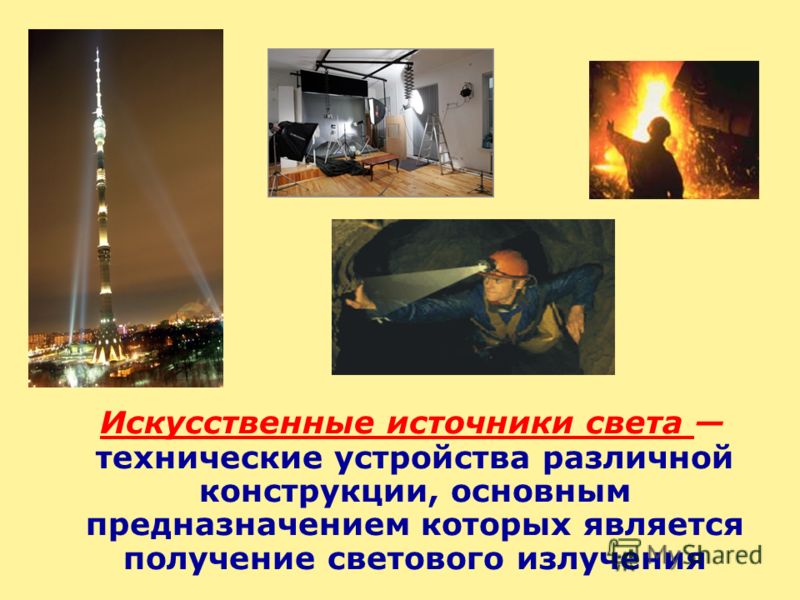
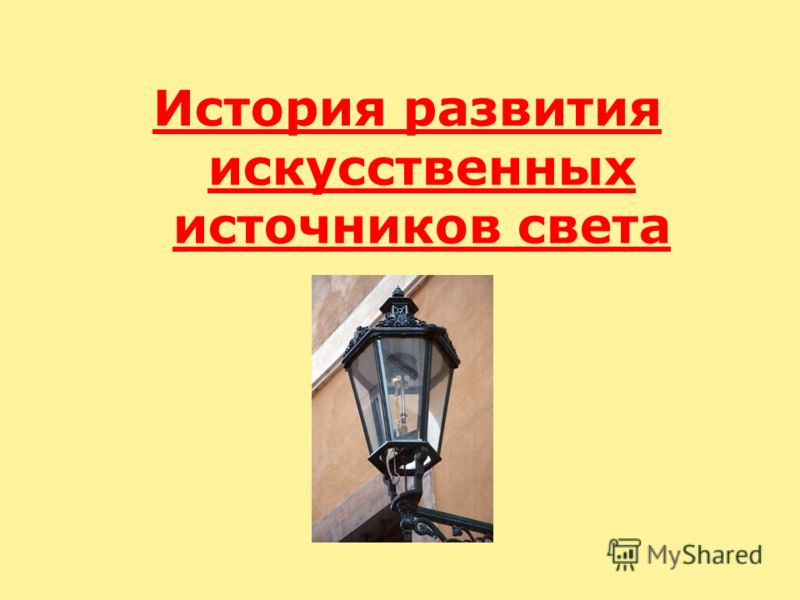
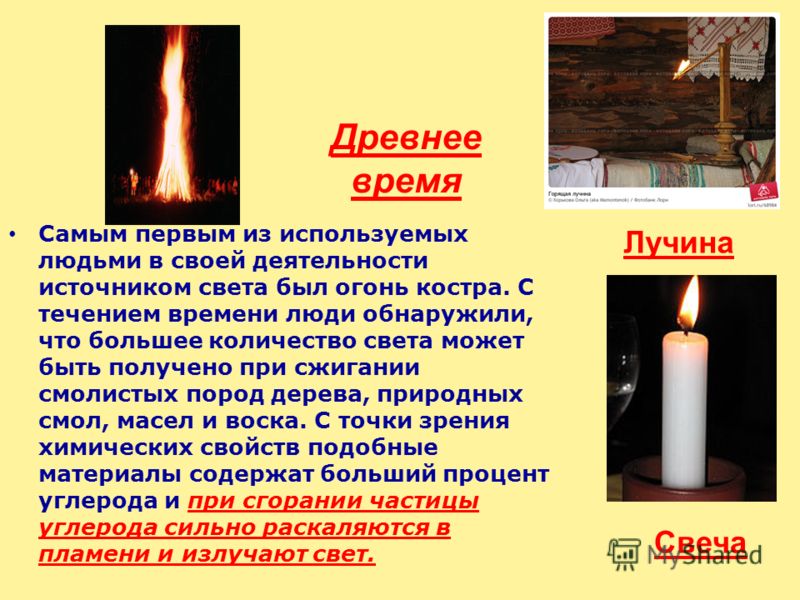
The very first source of light used by people in their activities was the fire of a fire. Over time, people discovered that more light could be produced by burning resinous woods, natural resins, oils and waxes. From point of view chemical properties Such materials contain a higher percentage of carbon and when burned, carbon particles become very hot in the flame and emit light. Candle Ancient time Lucina
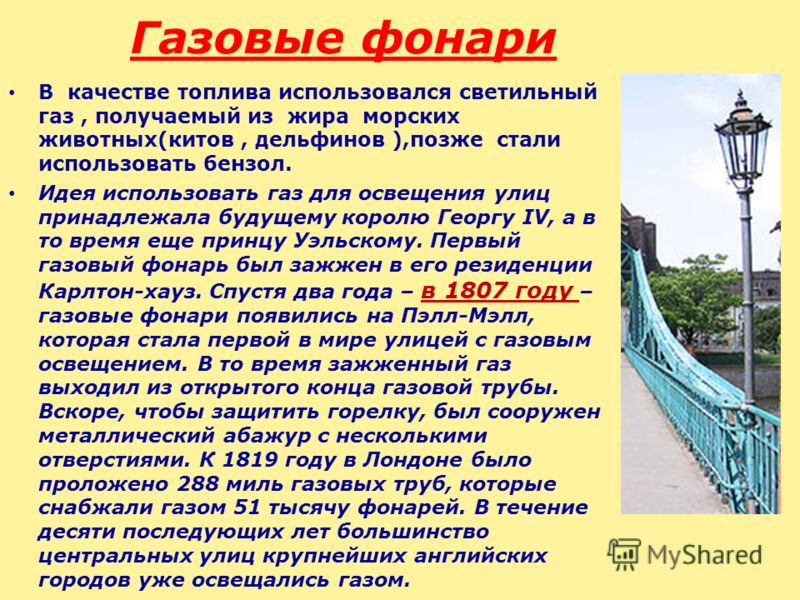
As we have seen, light is the main tool of photography, so we must understand what types of light there are and control the lighting on the subject being photographed. Contrast occurs due to the difference in the reflection of light in the same object. Areas with light differences, that is, parts with a lot of light reflection - or very light - and parts with little reflection - or too dark, will result in very contrasty photographs. Therefore, pay close attention to how the object reflects light. Polished and bright objects create reflections that can degrade the quality of your photo.
Gas lanterns Lamp gas obtained from the fat of marine animals (whales, dolphins) was used as fuel; later they began to use benzene. The idea of using gas to illuminate streets belonged to the future King George IV, and at that time the Prince of Wales. The first gas lamp was lit at his residence, Carlton House. Two years later - in 1807 - gas lamps appeared on Pall Mall, which became the world's first street with gas lighting. At that time, ignited gas came out of the open end of the gas pipe. Soon, a metal lampshade with several holes was constructed to protect the burner. By 1819, 288 miles had been laid in London gas pipes, which supplied gas to 51 thousand lamps. Over the next ten years, most of the central streets of the largest English cities were already lit by gas.

You will train your eye on the subtleties of enlightenment. Walk around the city, observing the illumination of the sun, the street and the surrounding area. Types of natural light depending on time. The colors take on a “warm” tone. The contrast is great; watch scenes with the sun in front, that is, “against the light.”
The sunlight has an angle of 45 degrees, which provides optimal illumination. Ideal time for group photos. Avoid! the contrast is too high, the shadows are dead and the high lights are blinding. Low light dramatizes scenes, establishing ideal volumes for photographs of nature and urban architecture. Night: There are several types of urban lighting. Don't forget to watch the moon, which acts as a big hitter of sunlight!
Further progress in the field of invention and design of light sources was largely associated with the discovery of electricity and the invention of current sources. When various conductive materials with a high melting point are heated by electric current, they emit visible light and can serve as light sources of varying intensities. Such materials were proposed: graphite (carbon thread), platinum, tungsten, molybdenum, rhenium and their alloys. Electric incandescent lamps Electric incandescent lamps
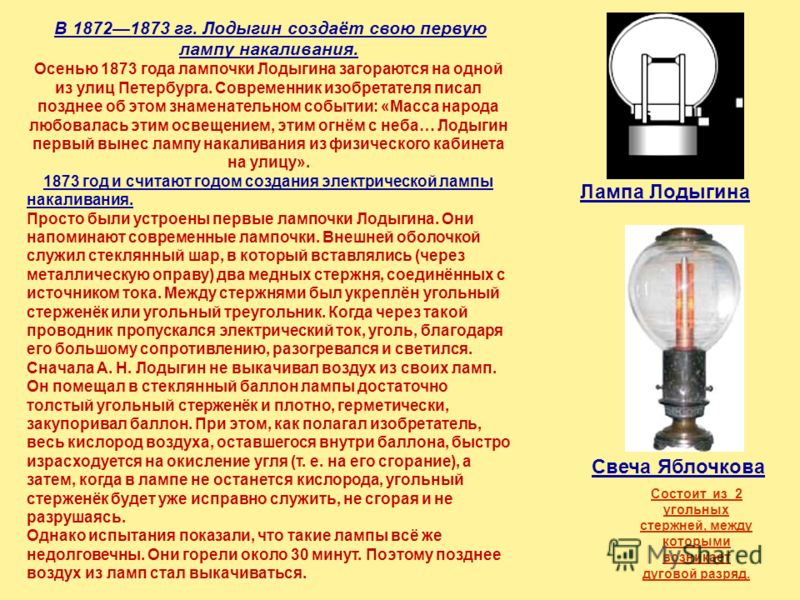
The sun is the main source of natural light, and lamps are artificial light sources. Light is an electromagnetic wave, which in the case of natural light has the sun as its source, and in the case of artificial light, energy generated from alternative sources.
No matter where light comes from, it has a major impact on life on Earth. Natural light is self-generated and divided into a spectrum of colors, the visible colors of the rays that we feel. The spectrum contains light with shorter wavelengths and closer to violet at one end and light with longer wavelengths and closer to red at the other. Accordingly, these rays are called ultraviolet and infrared and are not visible to the human eye. The full spectrum of light from natural sources is ideal for animal and plant life on Earth.
In Lodygin creates his first incandescent lamp. In the autumn of 1873, Lodygin's light bulbs light up on one of the streets of St. Petersburg. A contemporary of the inventor later wrote about this significant event: “The mass of people admired this lighting, this fire from the sky... Lodygin was the first to take the incandescent lamp out of the physics office onto the street” a year and is considered the year of the creation of the incandescent electric lamp. Lodygin’s first light bulbs were simply installed. They resemble modern light bulbs. The outer shell was a glass ball into which two copper rods connected to a current source were inserted (through a metal frame). A coal rod or coal triangle was fixed between the rods. When an electric current was passed through such a conductor, the coal, due to its high resistance, heated up and glowed. At first, A. N. Lodygin did not pump the air out of his lamps. He placed a fairly thick carbon rod in the glass lamp cylinder and sealed the cylinder tightly, hermetically. In this case, as the inventor believed, all the oxygen in the air remaining inside the cylinder will quickly be used up for the oxidation of coal (i.e., for its combustion), and then, when there is no oxygen left in the lamp, the carbon rod will already serve properly without burning and without collapsing. However, tests have shown that such lamps are still short-lived. They burned for about 30 minutes. Therefore, later the air began to be pumped out of the lamps. Yablochkov candle Consists of 2 carbon rods, between which an arc discharge occurs. Lodygin's lamp
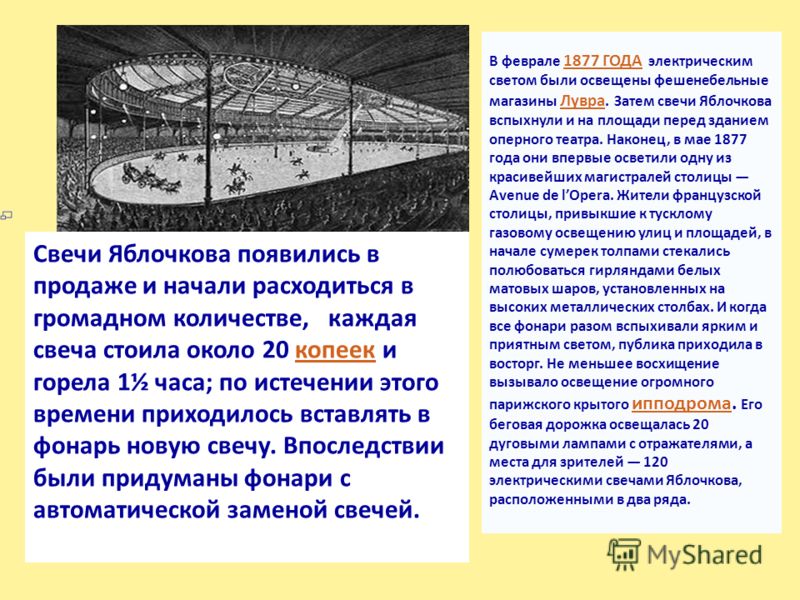
It is this type that allows plants and animals to develop. Darkness, a factor inherent in photoactivity in organisms, helps rejuvenate and restore life forms at the cellular level. On the other hand, excessive exposure to sunlight has harmful effects on living organisms. Harmful UV rays can lead to diseases such as skin cancer and cataracts, as well as damage the texture of the skin. For plants, light and dark periods are essential for photosynthesis as they help balance cellular activity in terms of growth or repair.
Yablochkov's candles appeared on sale and began to sell in huge quantities, each candle cost about 20 kopecks and burned for 1½ hours; After this time, a new candle had to be inserted into the lantern. Subsequently, lanterns were invented with automatic replacement of candles. kopecks. In February 1877, the fashionable shops of the Louvre were illuminated with electric light. Then Yablochkov’s candles flared up in the square in front of the opera house. Finally, in May 1877, they illuminated for the first time one of the most beautiful thoroughfares of the capital, Avenue de lOpera. Residents French capital, accustomed to the dim gas lighting of streets and squares, at the beginning of twilight crowds flocked to admire the garlands of white matte balls mounted on high metal poles. And when all the lanterns flashed at once with a bright and pleasant light, the audience was delighted. No less admirable was the lighting of the huge Parisian indoor hippodrome. Its running track was illuminated by 20 arc lamps with reflectors, and the seats for spectators were illuminated by 120 Yablochkov electric candles, located in two rows of the YEAR of the Louvre Hippodrome
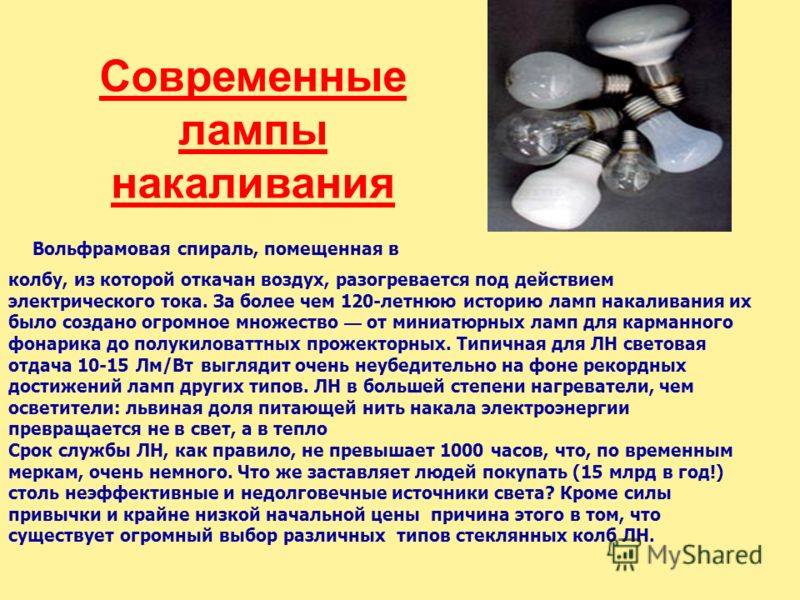
Sunlight is also dangerous in the sense that it cannot be modified or controlled according to human needs. Artificial light is generated by unnatural energy sources. Most human activities would be virtually impossible if there were no alternative light sources. The advantage of this light is that it can be controlled according to the needs and requirements of the individual. In certain situations, the intensity, quality and quantity of light can be properly controlled.
A tungsten spiral, placed in a flask from which air has been evacuated, is heated by an electric current. Over the more than 120-year history of incandescent lamps, a huge variety of them have been created, from miniature flashlight lamps to half-kilowatt floodlights. The typical luminous efficiency of LNs, Lm/W, looks very unconvincing compared to the record achievements of other types of lamps. LNs are more heaters than illuminators: the lion's share of the electricity feeding the filament is converted not into light, but into heat. The service life of LNs, as a rule, does not exceed 1000 hours, which, by time standards, is very little. What makes people buy (15 billion a year!) such inefficient and short-lived light sources? Besides force of habit and the extremely low initial price, the reason for this is that there is a huge selection of different types of LN glass flasks. Modern incandescent lamps

Artificial light does not have a spectrum of colors or wavelengths as diverse as natural light, making it less useful. Because it is a lower quality light, its effects on plants and animals tend to be more harmful. Plants and animals exposed to artificial light for long periods of time suffer degeneration or cell death much more frequently and more intensely than living things exposed to natural light alone.
Natural light consists of electromagnetic energy generated by a natural source and contains a spectrum of colors and wavelengths suitable for earthly life. Artificial light uses artificial energy sources and creates light that is less versatile and has more damaging effects on plants and animals if they are exposed for long periods of time. Moderate exposure to natural light is ideal for earthly life, but the same is not true for artificial light, which is intended to illuminate indoors or at night.
An electric current passing through a tungsten helix heats it up to high temperature. When heated, tungsten begins to glow. However, due to the high operating temperature, tungsten atoms are constantly evaporated from the surface of the tungsten filament and deposited (condensed) on the cooler surfaces of the glass bulb, limiting the life of the lamp. In a halogen lamp, the iodine surrounding the tungsten enters into a chemical combination with the evaporated tungsten atoms, preventing the latter from depositing on the bulb. Tungsten atoms are thus concentrated either on the helix itself or near it. As a result, tungsten atoms return to the spiral, which makes it possible to increase the operating temperature of the spiral (to obtain brighter light), extend the life of the lamp. Iodine tungsten atoms Halogen incandescent lamps A new direction in the development of lamps is the so-called. IRC - halogen lamps (the abbreviation IRC stands for “infrared coating”). A special coating is applied to the bulbs of such lamps, which allows visible light to pass through, but retains infrared (thermal) radiation and reflects it back to the spiral. Due to this, heat loss is reduced and, as a result, the efficiency of the lamp increases. With infrared heat, energy consumption is reduced by 45% and the lifetime is doubled (compared to a conventional halogen lamp)

Interview with Juliana Garrocho
Poorly lit environments evoke feelings of melancholy and sadness, while bright and well-lit environments create feelings of joy and pleasure. Natural light is considered an important factor contributing not only good health, but also a sense of well-being and comfort for a person. Natural light has enormous benefits and can be used as a strategy to achieve higher quality environment and energy efficiency in buildings. That's what architect and urban planner Juliana Garrocho from Brasil, author of Luz-Luz and Architectural Design: Rooflighting Strategies for Shopping Centers, thinks.


GAS-DISCHARGE LIGHT SOURCES OR COLD GLOW LAMPS The operation of such lamps is based on the fact that gases, mostly inert, and vapors of various metals emit light when an electric current passes through them. This method of emitting light is called electroluminescence. In this case, each gas or vapor glows in its own color. Therefore, along with lighting, they are used for advertising and signaling.

She goes on to say that planning for the use of natural light in a project involves involving multiple specialists. Juliana Garrocho - Natural light is one of the most important sources of energy for a person who carries out his activities, as it provides a clear vision of the world. Additionally, every living thing depends on exposure to natural light to activate a cycle of physiological functions. However, to ensure natural light provides effective illumination for any task while providing a pleasing visual environment, it becomes necessary to know its advantages and disadvantages.

Fluorescent lamps(LL) discharge lamps low pressure They are a cylindrical tube with electrodes into which mercury vapor is pumped. Under the influence of an electrical discharge, mercury vapor emits ultraviolet rays, which, in turn, cause the phosphor deposited on the walls of the tube to emit visible light. LLs provide soft, uniform light, but the distribution of light in space is difficult to control due to the large radiation surface. One of the main advantages of LLs is durability (service life up to hours). Thanks to their efficiency and durability, LLs have become the most common light sources in corporate offices. In countries with mild climates, LLs are widely used in outdoor lighting of cities. In cold areas, their spread is prevented by falling luminous flux at low temperatures. If we “twist” the LL tube into a spiral, we get a CFL compact fluorescent lamp. Fluorescent lamps are energy saving Fluorescent lamps
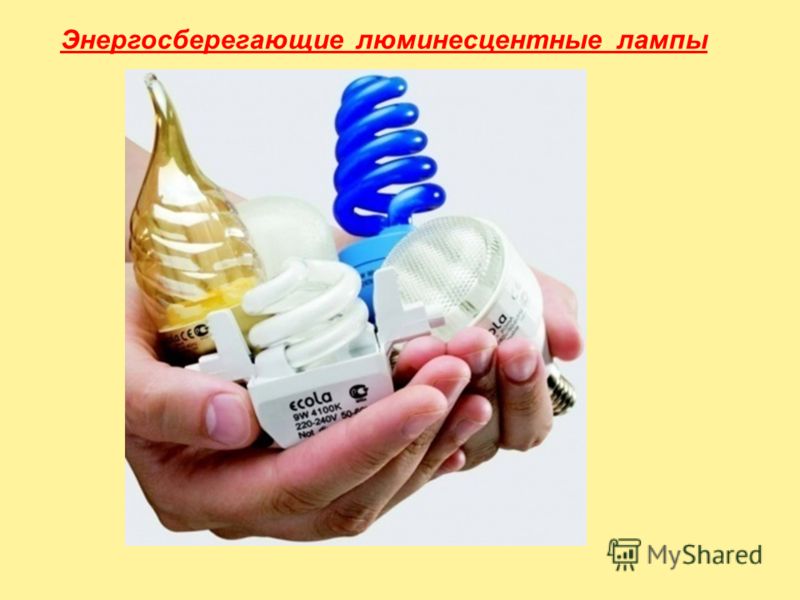
Among the positive aspects of natural light, it can be said that the quality of the light received is better since human vision has evolved with natural light, and the constant change in the amount of natural light over time and space is beneficial because it provides stimulant effects in the environment. However, it is also necessary to know its disadvantages, such as direction and very high intensity, because the biggest disadvantage of natural light is its unpredictability.
Is this just because of the energy saving issue? Natural light has always played an important role in architecture from an aesthetic and symbolic point of view, but also in terms of comfort and functional lighting. Natural lighting can provide singular effects in a given space, giving it its own personality, creating scenographic aspects and striking relevant characteristics. With the advent of the International Style, a method of projection developed that was increasingly unrelated to the climatic features of the site and human comfort needs.

THE MAIN DISADVANTAGE OF NEW GENERATION LAMPS IS THAT they contain mercury vapor, approximately 3-5 mg of the substance each. Mercury belongs to the first hazard class (an extremely dangerous chemical). The system for recycling energy-saving lamps in our country has not been thought out. There are practically no enterprises in the country that could properly dispose of these products. People are accustomed to throwing away used lamps with regular household waste. IN in this case it is unacceptable. Most great harm can bring organic mercury compounds formed after exposure to chemical substance into the environment along with precipitation. Careless handling of energy-saving lamps can lead to mercury poisoning. For example, if you accidentally break just one light bulb, the maximum permissible concentration of mercury in the air will reach 160 times. As a result, a person is affected nervous system, liver, kidneys and gastrointestinal tract. If you accidentally break the bulb of an energy-saving lamp, immediately and thoroughly ventilate the room. In addition, new generation light bulbs produce more intense radiation than conventional ones. According to the British Association of Dermatologists, this may primarily affect people with increased skin sensitivity to light. According to scientists, the use of energy-saving lamps can harm a person with skin diseases and lead to skin cancer, as well as cause migraines and dizziness in people suffering from epilepsy.
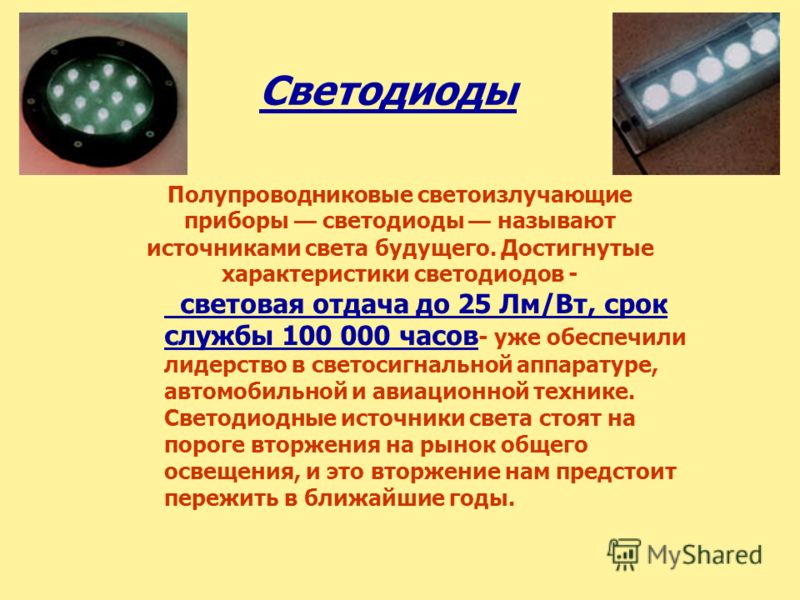
The advent of “glass curtains” created a true icon for office buildings. The corresponding "greenhouse building" was thus exported as a symbol of power without being adapted to the cultural and climatic characteristics of the destination. It can be said that during this period increased attention was paid to the benefits of natural light. One of the characteristics of modern architecture is the use of large glazed facades, regardless of local climatic conditions. This indiscriminate use often causes buildings to overheat due to excessive heat gain from falling solar radiation.
LEDs Semiconductor light-emitting devices (LEDs) are called the light sources of the future. The achieved characteristics of LEDs - luminous efficiency up to 25 Lm/W, service life - have already ensured leadership in lighting equipment, automotive and aviation technology. LED sources lights are on the verge of invading the general lighting market, an invasion we will have to endure in the coming years.
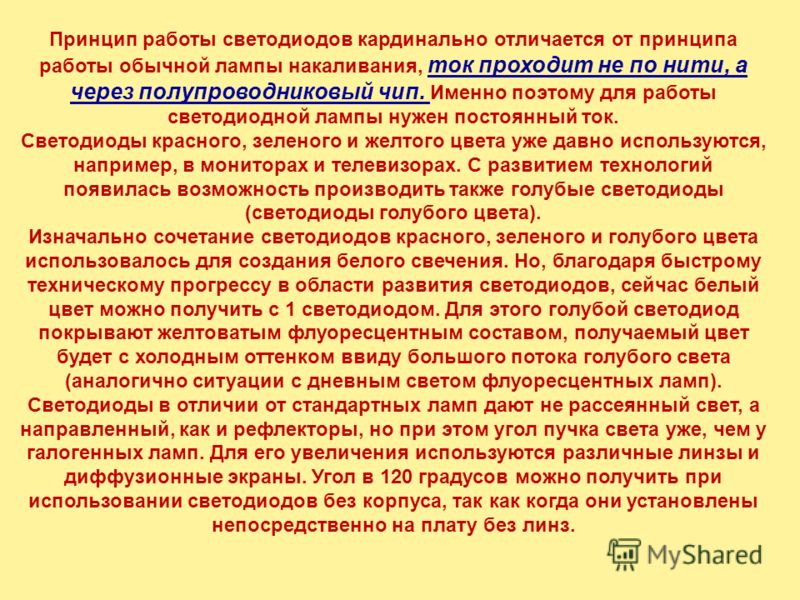
Because of this overheating, two immediate consequences arise: user discomfort and increased electrical energy consumption for artificial environmental conditioning. The identification of such problems has given rise to the need to develop new technologies for the production of translucent components, which are mainly sought ideal component: high light transmission; low heat transfer; and low ultraviolet transmission.
Currently actual problem is concern about energy consumption and the environment. It is not uncommon to see several countries with their legislation reformulated with a noticeable concern for energy-environmental issues, including a desire for comfort in the built environment. Studying at several levels, environmental comfort is considered one of the main goals of architecture: it seeks adequate parameters to design and evaluate the performance of a built space with the goal of maximizing the user's experience.
The principle of operation of LEDs is radically different from the principle of operation of a conventional incandescent lamp; the current does not pass through the filament, but through a semiconductor chip. This is why an LED lamp requires constant current to operate. Red, green and yellow LEDs have long been used, for example, in monitors and televisions. With the development of technology, it has become possible to also produce blue LEDs (blue light emitting diodes). Initially, a combination of red, green and blue LEDs was used to create white glow. But, thanks to rapid technological progress in the field of LED development, white color can now be achieved with 1 LED. To do this, a blue LED is coated with a yellowish fluorescent compound; the resulting color will have a cold tint due to the large flow of blue light (similar to the situation with daylight fluorescent lamps). LEDs, unlike standard lamps, do not provide diffused light, but directed light, like reflectors, but the angle of the light beam is narrower than that of halogen lamps. To magnify it, various lenses and diffusion screens are used. An angle of 120 degrees can be achieved when using LEDs without a housing, as when they are installed directly on the board without lenses.

The indiscriminate and predatory use of traditional sources and the proliferation of nuclear installations have decisively raised the issue of environmental impact and the limitation of inadequately exploited energy sources. The challenge in the current scenario is to change and replace the traditional consumer behavior of the production and mass consumption model in order to rationalize the use of energy and indicate measures for more responsible use, taking into account not only the present moment, but also its global impact on the future.
Advantages of using LEDs: LEDs have a high luminous efficiency of Lm/W, while for standard lamps it is 7-12 Lm/W. At the same time, energy consumption remains quite low (40-100 mW), so only a few lamps are required for lighting. LED lamps produced by the German company Paulmann consume only 1 W of electricity with high light output. LEDs produce virtually no heat. However, high-power lamps use heat sinks, but the heat is generated and distributed over a very limited area. LEDs have a lifespan of thousands of hours, and after this time they will still work, although they will produce less than 50% of the original light. This corresponds to 11 years of continuous use of the light bulb. Accurate color rendering due to the absence of UV radiation. Vibration resistance. Possibility of using a longer cable when DC or alternating current 50 Hz. LEDs are increasingly used in lamps; they act as a light source, and not just as decorative lighting. Examples of use: Outdoors, in the bathroom, in the kitchen, in the hallway, in the living room.

Continuous energy use is arguably the largest environmental impact associated with a building, and therefore energy efficient design should be a top priority. This is due to several aspects, including the use of renewable energy sources, minimizing cooling loads and optimizing natural lighting.
From an environmental point of view, a building must provide the user, first of all, with a minimum condition of habitation, followed by a continuous sense of well-being. It is noteworthy that regarding aspects of lighting in architectural design, they should be considered together. This integrated vision also allows for good energy performance of the architecture, which, when adapted to the needs of the user, leads above all to a more comfortable and energy-efficient environment.
As a result of the global crisis, the problem of energy saving has become even more pressing throughout the world. In this regard, 27 EU countries have already banned the sale of incandescent lamps with a power of 100 watts or more since September 1, 2009. And already in 2011 in European countries it is planned to introduce an embargo on the sale of the most popular 60-watt light bulbs among buyers. By the end of 2012, it is planned to completely phase out incandescent lamps. The US Congress passed legislation to phase out incandescent light bulbs in 2013. According to these laws, residents of the European Union and the United States will completely switch to energy-saving light sources - fluorescent and LED bulbs. In Ukraine, according to government decree, the production and sale of incandescent lamps is expected to cease in 2013.

In this sense, it is important to emphasize that to achieve energy efficiency in a building, natural lighting must be designed in combination with an artificial lighting system. Because, thanks to the optimal use of natural light, the use of artificial light is reduced. So when natural light is sufficient in a given environment, artificial light can be turned off or dimmed.
In the Brazilian context, mainly the use of natural light is reflected directly in the energy spent on air conditioning and artificial lighting. In most Brazilian cities, sky brightness is intense, greatly reducing the use of artificial light in most buildings. Air conditioning costs can also be reduced because natural light produces less heat per unit of light than most artificial light sources, which also reduces the load on the air conditioner.
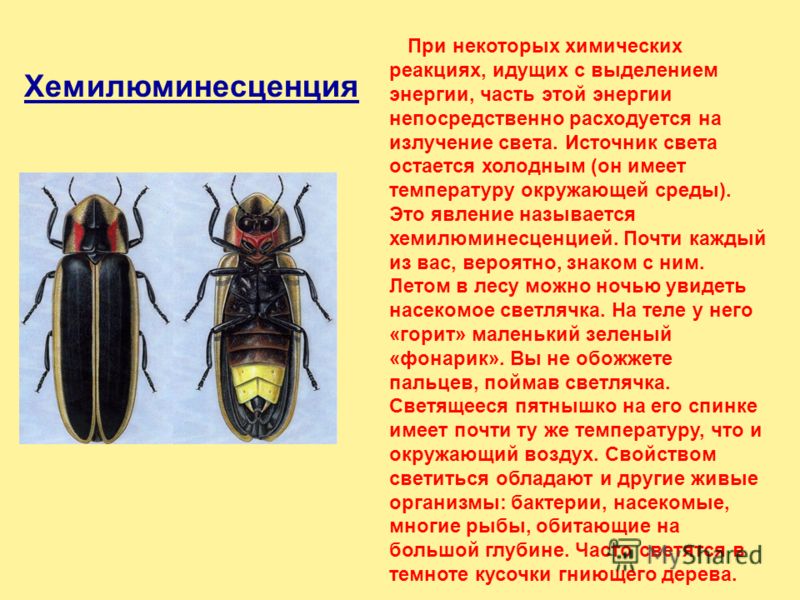
In some chemical reactions that release energy, part of this energy is directly spent on the emission of light. The light source remains cool (it is at ambient temperature). This phenomenon is called chemiluminescence. Almost all of you are probably familiar with it. In the summer in the forest you can see the firefly insect at night. A small green “flashlight” “burns” on his body. You won't burn your fingers catching a firefly. The luminous spot on its back has almost the same temperature as the surrounding air. Other living organisms also have the property of glowing: bacteria, insects, and many fish that live at great depths. Pieces of rotting wood often glow in the dark. Chemiluminescence
Methods of light emission 1. Thermal radiation - emission of light from a fire flame, the Sun, a wooden torch, a candle, electric incandescent lamps (Lodygin lamp, Yablochkov candle, gas lamps, halogen lamps) 2. Electroluminescence - fluorescent lamps, fluorescent lamps, advertising tubes. 3. Cathodoluminescence - the glow of TV screens, oscilloscopes 4. Chemiluminescence - the glow of fireflies, rotting trees, fish. 5. Emission of semiconductors when current is passed through them - LED lamps
![]()
natural and artificial light sources
Natural light source Natural light sources are those that emit light naturally. For example: sun, lightning, stars, etc.
Artificial light source Artificial light sources are those sources created by man.
Several unusual sources
Types of light sources * Electric: Electric heating of incandescent or plasma bodies. Joule heat, eddy currents, flows of electrons or ions.* Nuclear: decay of isotopes or nuclear fission. * Chemical: combustion (oxidation) of fuels and heating of combustion products or glowing bodies. * Thermoluminescent: conversion of heat into light in semiconductors. * Triboluminescent: conversion of mechanical influences into light. * Bioluminescent: bacterial light sources in living nature.
Hazardous factors of light sources * Open flame. * Bright light radiation is dangerous for the organs of vision and exposed skin. * Thermal radiation and the presence of hot working surfaces can lead to burns. * High-intensity light radiation can lead to fire, burns, and injury - laser radiation , arc lamps, etc.* Flammable gases or liquids.* High voltage nutrition.* Radioactivity.
Light sources artificial natural
Ancient times - candles, torches and lamps The very first source of light used by people in their activities was the fire (flame) of a fire. Over time, and with increasing experience in burning various combustible materials, people discovered that more light could be obtained by burning any resinous wood, natural resins and oils and wax. From the point of view of chemical properties, such materials contain a larger percentage of carbon by mass, and when burned, sooty carbon particles become very hot in the flame and emit light.
Gas lanterns Further progress and development of knowledge in the field of chemistry, physics and materials science have allowed people to also use various combustible gases that release more light during combustion. Gas lighting was quite widely developed in England and a number of European countries. A particular convenience of gas lighting was that it became possible to illuminate large areas in cities, buildings, etc., due to the fact that gases could be very conveniently and quickly delivered from a central storage facility (cylinders) using rubberized hoses (hoses), either steel or copper pipelines, and also easily cut off the gas flow from the burner by simply turning the shut-off valve.
The emergence of electric light sources Further progress in the field of invention and design of light sources was largely associated with the discovery of electricity and the invention of current sources. At this stage of scientific and technological progress, it became quite obvious that in order to increase the brightness of light sources, it was necessary to increase the temperature of the area emitting light. If, in the case of combustion reactions of various fuels in air, the temperature of the combustion products reaches 1500-2300 ° C, then when using electricity, the temperature can be significantly increased.
The presentation was prepared by Selezova Zhenya Koroleva Kristina Mamyanov Evgeniy
THANK YOU FOR WATCHING
